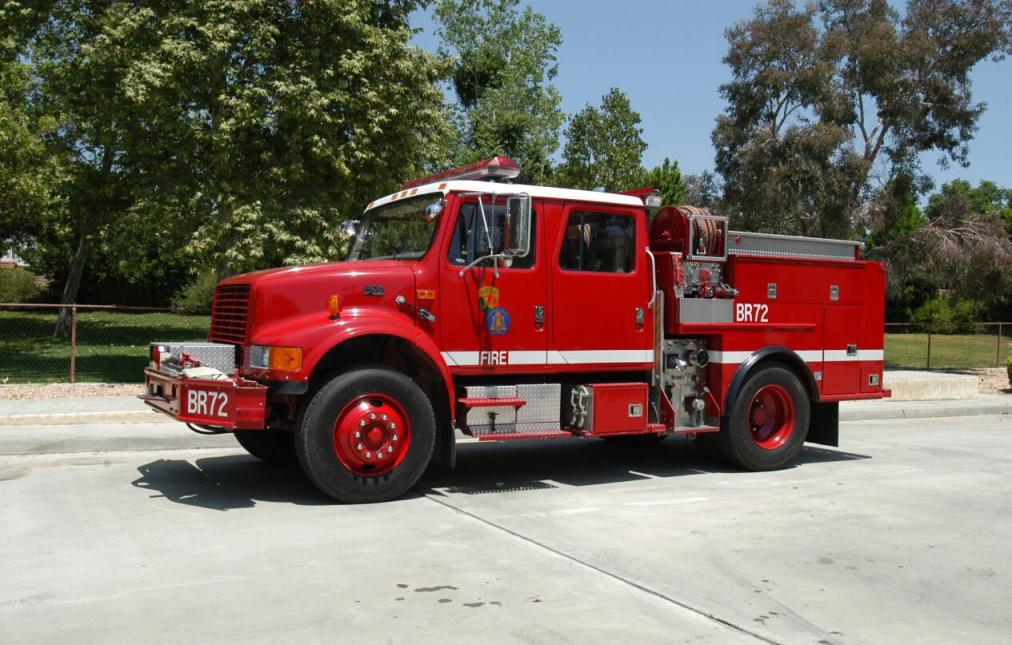Various types of fire engines are designed to extinguish local and large-scale fires, prevent the spread of fire, protect people, animals, property from it. Modern special equipment includes a diverse arsenal of equipment: primary fire fighting equipment, automobiles of various categories, communication equipment and specific installations. Before starting work, a number of actions can be performed, which include reconnaissance of fire sources, elimination of combustion products from the premises, rescue of people, opening of structures and much more. For the quality of such operations, appropriate equipment and machines are required.
general information
Among the main types of fire engines, transport or transported equipment is used that is used directly to extinguish the fire, as well as auxiliary vehicles serving to service personnel and equipment.
The units under consideration are created on the basis of wheeled, tracked, swimming and aircraft vehicles, as well as on the basis of trains. Fire equipment is equipped with parts of the State Fire Service, as well as units of relevant ministries (forestry, the Ministry of Emergencies, railway transport, and the like).
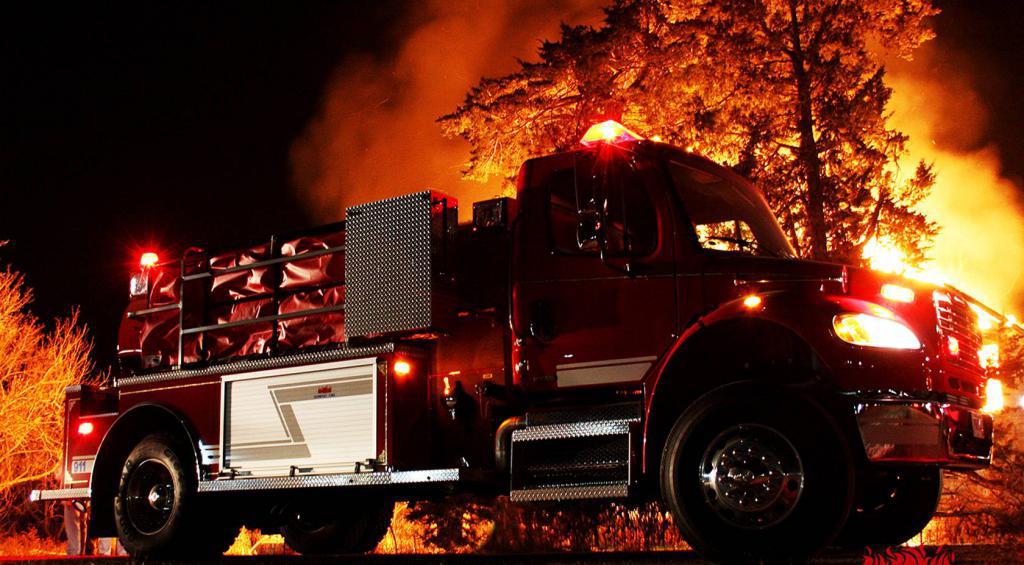
Types of fire trucks
Fire trucks (PA) are divided into several categories depending on the purpose and conditions of use. Basic machines for general use:
- Car tanks (AC).
- AED (equipment with high pressure pumps).
- APP (first aid vehicles).
- Pump and hose transport (AHR).
The main PA intended use:
- Airfield options (AA).
- AGVT (gas quenching model).
- AP (versions with powder dampers).
- Pumping stations (PNS).
- Foam Extinguishing Machines (APT).
- ACT and AGT - with combined and gas absorbers.
In addition, there are types of special fire trucks:
- ASh (staff modifications).
- AL (car stairs).
- Cranked car lifts (AIC).
- AR (sleeve cars).
- ASA (emergency rescue option).
- To remove smoke (DU).
- GDZS (gas and smoke protection service).
Among auxiliary PA:
- Cargo and passenger vehicles.
- Buses
- Fuel trucks.
- Repair shops on wheels.
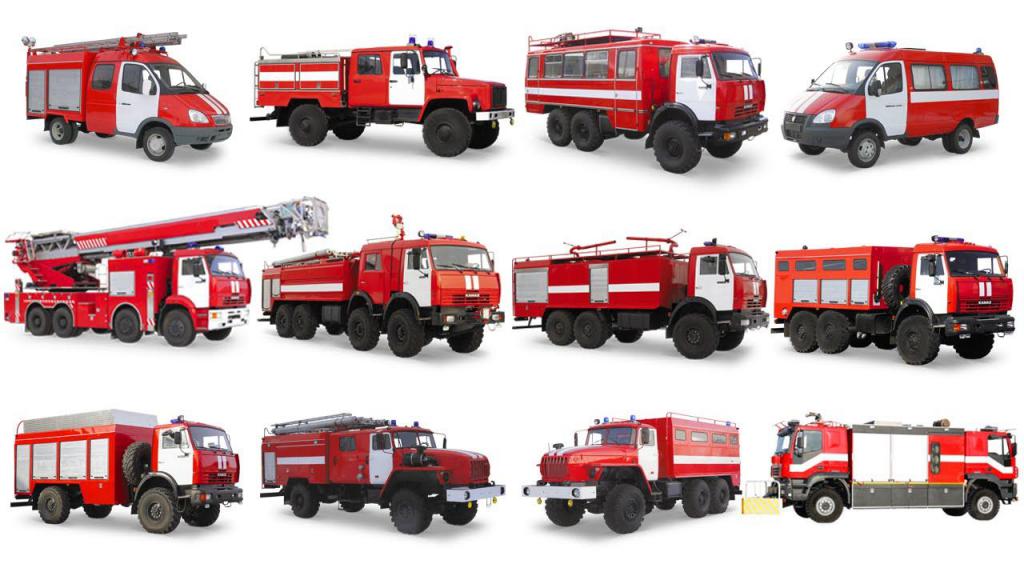
Requirements
Regardless of the type and purpose of fire engines, a number of general requirements are presented to them (regulated by the Federal Law on Technical Support and Fire Safety). Among them:
- Fire fighting equipment must guarantee the functions assigned to it under operating conditions.
- Design features and manufacturing materials should ensure the safety of machines during transportation, operation, storage and disposal.
- Each unit has a marking that allows it to be identified.
- The technical plan documentation should contain information for training personnel in the rules for the effective use of existing equipment.
- All types of fire engines should be used in accordance with the parameters of fire safety requirements, in accordance with the methods established by the relevant regulatory documentation.
Appointment
The main fire engines are intended for the transportation of personnel, fire extinguishing devices and working equipment to the place of ignition. Common PAs are used to eliminate fires in the city and residential sectors.Targeted application PAs are used for extinguishing fire at oil, gas, chemical facilities, airfields, high-risk enterprises, and more. All types of fire engines are built mainly on a motor chassis of domestic production, are included in the general notation system.
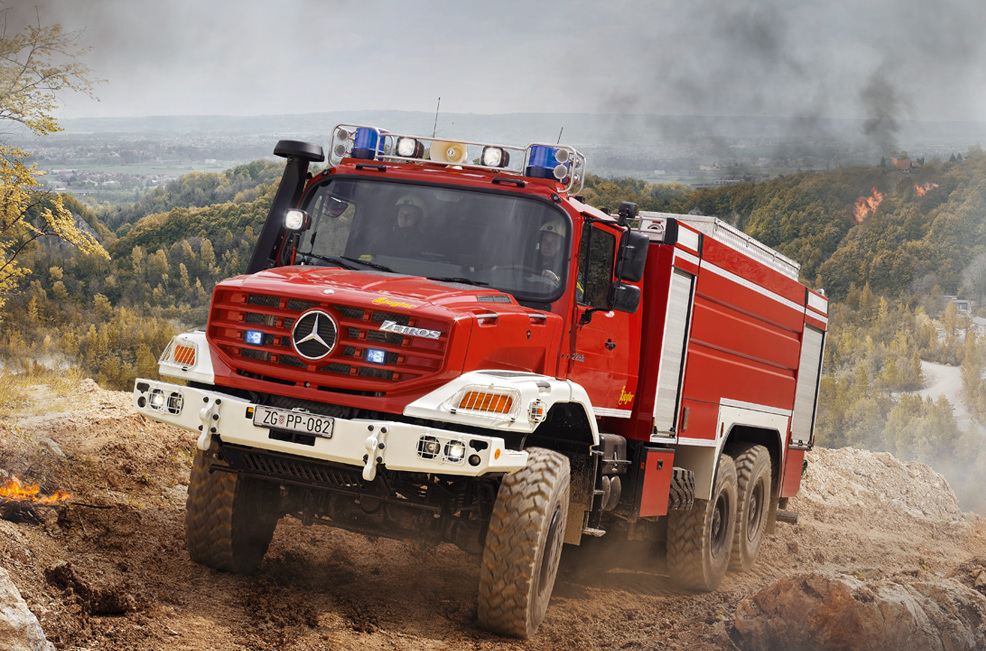
Classification
The identification of the technique in question is carried out by means of a specific alphanumeric code. The first digit indicates the total mass of the PBX. The second designation is the type of vehicle:
- Passenger car - 1.
- Bus - 2.
- Truck - 3.
- Truck tractor - 4.
- Tipper - 5.
- Tanker - 6.
- Wagon - 7.
- 8 - reserve mark.
- 9 - special equipment.
Types of fire trucks and their classification by serial number are determined by the third and fourth digits in the index. The fifth element in the symbol is the modification of the vehicle. The sixth digit is the type of execution (for a temperate, tropical or cold climate - 6/7/1). Numbers 01, 02 and similar ones indicate that the equipment is manufactured in a transitional version or is equipped with additional equipment. In addition, the alphabetic designation of the manufacturer is indicated in front of the numbers.
The transition to identification according to the European principle (division into classes) is supposed:
- L - the total weight of the PA is from 2 to 7.5 tons.
- M - medium modifications (7.5-14.06 tons).
- S - heavy class (more than 14 tons).
An example of a symbol: APT 3.0-40 / 4 (4331) model XXX. We are talking about PA foam extinguishing with a tank of 3 cubic meters. m. with a feed of 40 and 4 l / s (at high pressure). Chassis - ZIL-4331, model number - XXX.
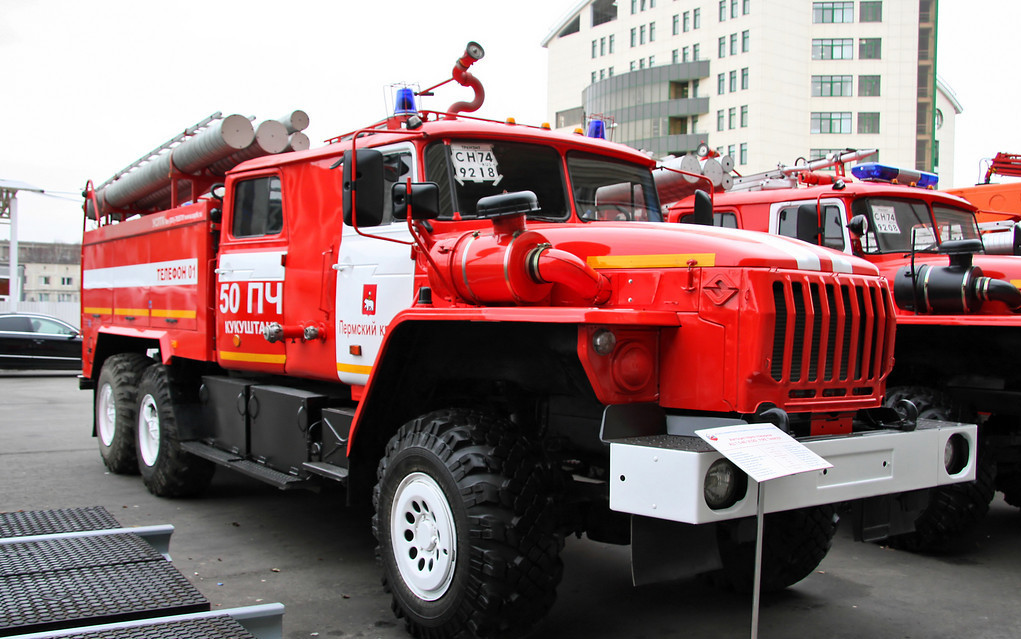
Types of maintenance of fire trucks
For each PA, a specific operating norm for a quarter and a year is established. This takes into account the mileage, the allocated amount of fuel and other technical conditions. Monthly mileage is calculated based on a quarterly figure. To maintain optimal combat readiness and increase the capabilities of the unit, a reserve of PA is established.
Technical readiness of equipment is determined by the following points:
- Serviceability and general condition.
- Refueling with fuel and lubricants, operational and fire extinguishing materials.
- Complete fire-fighting appliances and equipment, taking into account the personnel situation and labor protection rules.
- Compliance with standards of appearance, coloring and inscriptions GOST 50574-93.
If at least one requirement is not met, the operation of the equipment is prohibited. Types and frequency of maintenance of fire trucks is organized according to a planned preventive principle.
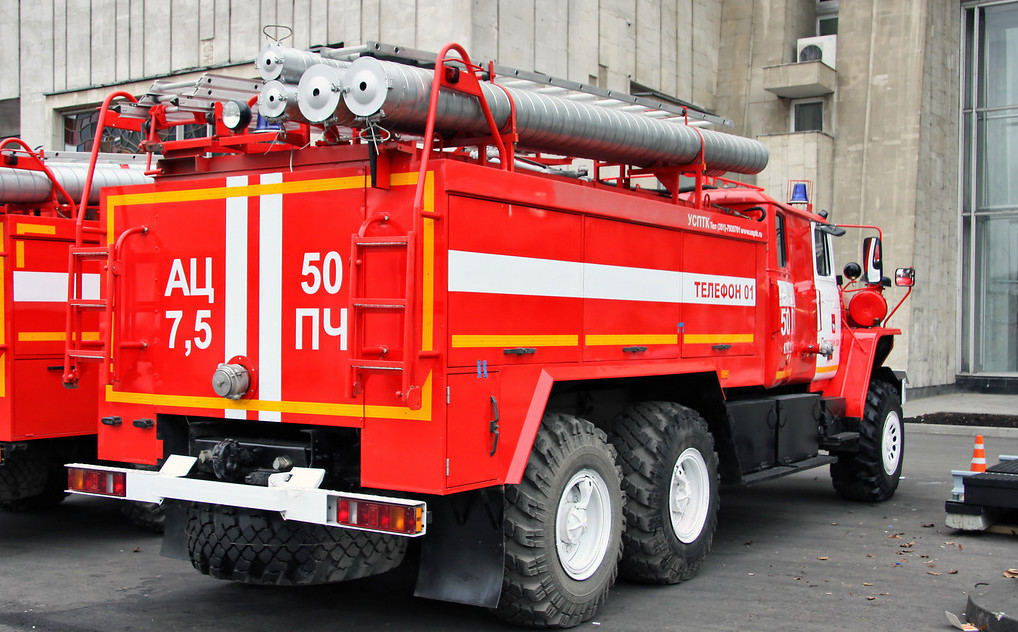
Features
Maintenance is a set of preventive measures aimed at maintaining the PA in good condition and readiness for operation. During maintenance, the following should be provided:
- Constant technical readiness for work.
- Stable operation of vehicle units over a specified period of service.
- Traffic safety.
- Elimination of the causes of premature occurrence of malfunctions.
- The established consumption of fuels and lubricants and other operational means.
- Reducing the negative impact of PA on the environment.
Periodicity
Next, we consider how many types of fire fighting vehicles exist:
- ETO - daily check when changing the guard.
- PA service during training or fire.
- The same procedure for returning to the depot.
- THEN after the first thousand kilometers.
- TO-1 (first maintenance).
- TO-2.
- CO - seasonal inspection.
By whom and when is maintenance performed?
ETO is carried out in the unit during the changing of guards by the duty driver and staff under the supervision of the squad leader. All PA included in the combat crew and reserve must be clean, refueling fuels and lubricants and operational materials, including fire extinguishing agents.The driver-changer makes all the records about the operation of the vehicle during duty (in the operational card). In addition, his responsibilities include preparing the machine for delivery. The driver accepting the PA checks the condition of the vehicle in the required volume and makes a corresponding entry in the card.
MOT in training or fire is carried out by the driver of the car. A similar procedure after returning - by the head of the guard shift.
Service after a thousandth run and TO-1 is carried out by the head of the GPS unit. TO-2 and SO is carried out by the head of the unit in which the specified set of measures takes place.
For TO-1 and TO-2, the car is withdrawn from combat crew and replaced by a reserve unit. The procedure is determined by the head of the GPS garrison, taking into account local conditions and characteristics. For TO-1, the time spent by PA on service should not exceed 2 days (with TO-2 - 3 days).
During machine maintenance, certain types of current repairs can be performed in an amount not exceeding 20% of the labor input of the corresponding type of maintenance.
Equipment that has passed TO-2 is accepted by the head of the unit and the senior driver (according to the acceptance / delivery certificate). After maintenance, the vehicle must be in good condition, filled with operating materials, clean, adjusted and lubricated in accordance with the relevant technical documentation. On combat duty, the withdrawal of PAs that have not undergone yet another MOT is not allowed.
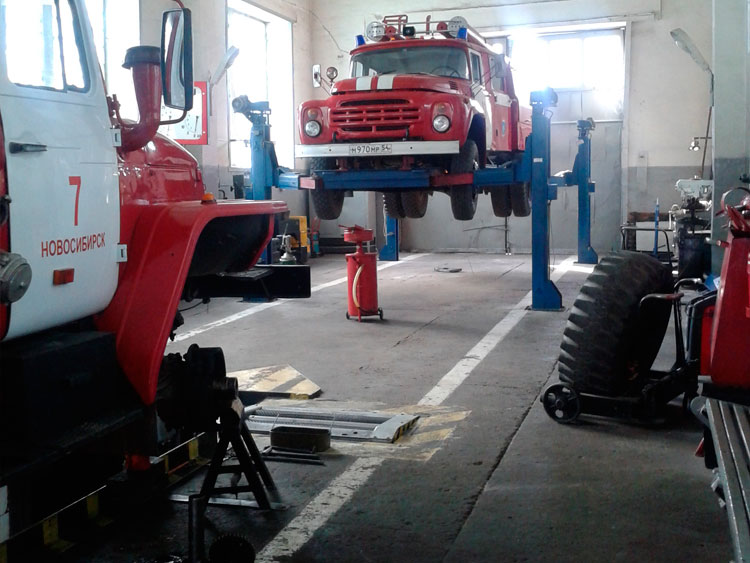
Repairs
Types of fire truck repairs:
- Directly for cars - capital, medium and current.
- For units - capital and current.
Repair work includes a set of manipulations to restore the performance of the PA and ensuring their normal operation. Activities are carried out as necessary or after a certain mileage.
Dismantling, as well as the replacement of components and assemblies, is carried out according to the results of preliminary diagnostics. After repair, the car is accepted by the head of the unit and the senior driver according to the act of acceptance / delivery. Before leaving for combat duty, the PA must undergo a run-in:
- After current and secondary repairs - 150 kilometers and two-hour operation of the main working unit.
- After overhaul - 400 km. mileage and 2 hours of operation of working devices.
Special designations
To designate PA in the general flow, the equipment should be equipped with certain informative differences. All fire units have a red color, for contrast, white symbols and stripes are applied to certain places. The placement of signs and the breakdown of painted areas is determined in accordance with state standards. The number of the inverter and the city are applied on the cabin door, and on the aft part - type PA and unit number. The bumper and visible parts of the chassis are painted in black color. In addition, the equipment is equipped with special light and sound signals.
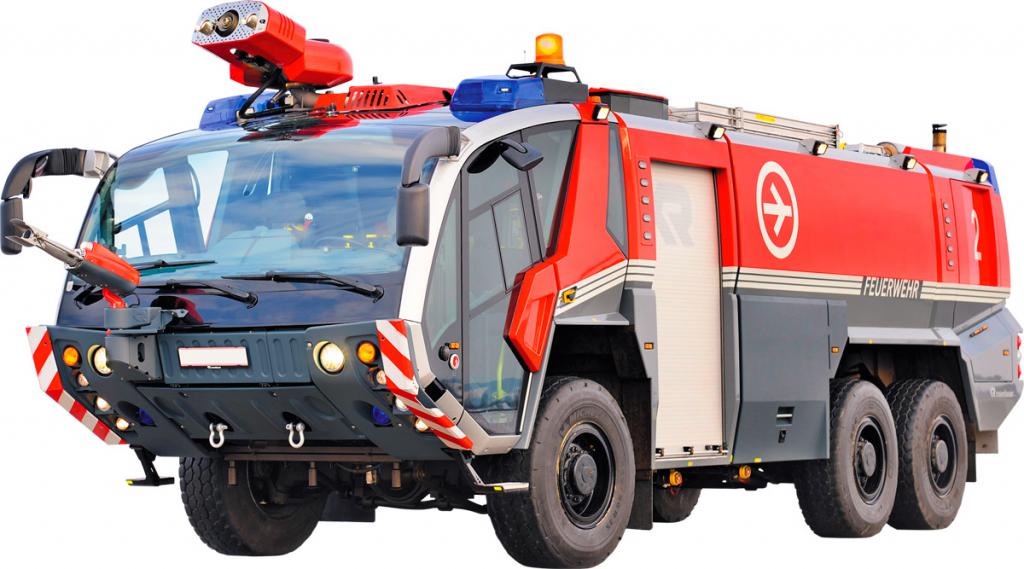
Total
Above, how many types of MOT have fire engines. Given the special purpose of these vehicles, these measures are strictly regulated, and violation of the terms of their passage is fraught with serious punishment for the responsible person, not to mention the safety of the operation of the machine.
